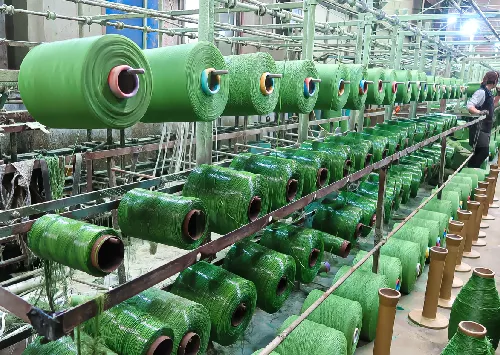
- Afrikaans
- Arabic
- Belarusian
- Bengali
- Czech
- Danish
- Dutch
- English
- Esperanto
- Estonian
- Finnish
- French
- German
- Greek
- Hindi
- Hungarian
- Icelandic
- Indonesian
- irish
- Italian
- Japanese
- kazakh
- Rwandese
- Korean
- Kyrgyz
- Lao
- Latin
- Latvian
- Malay
- Mongolian
- Myanmar
- Norwegian
- Persian
- Polish
- Portuguese
- Romanian
- Russian
- Serbian
- Spanish
- Swedish
- Tagalog
- Tajik
- Thai
- Turkish
- Turkmen
- Ukrainian
- Urdu
- Uighur
- Uzbek
- Vietnamese
cost of artificial turf football field
Dec . 02, 2024 02:59 Back to list
The Cost of Artificial Turf Football Fields A Comprehensive Analysis
Artificial turf has become a revolutionary development in sports infrastructure, particularly for football fields. With increasing maintenance costs for natural grass and higher usage demands, many institutions, from schools to professional teams, are opting for artificial turf. However, understanding the overall cost implications of this investment is crucial for stakeholders considering this transition.
Initial Installation Costs
The first major expense associated with artificial turf football fields is the initial installation cost. Depending on the quality of the material and the size of the field, these costs can range significantly. On average, the materials alone may cost between $600,000 to $1 million for a standard-sized football field. This price tag encompasses not only the turf but also the required foundation, drainage, and infill systems. High-quality turf, designed to withstand heavy use and provide optimal playing conditions, will generally be more expensive but may offer longer lifespans and better performance.
In addition to materials, labor costs must also be factored into the total expense. Installation typically requires skilled labor for proper turf application, field leveling, and drainage. Labor costs can vary by region and the complexity of the installation, but they can add another $100,000 to $200,000 to the initial budget. Therefore, stakeholders should anticipate a total installation cost ranging from $700,000 to over $1.2 million.
Maintenance Expenses
One of the key advantages of artificial turf is its lower maintenance requirements compared to natural grass. While natural grass fields require constant upkeep—mowing, watering, fertilization, and pest control—the maintenance of artificial turf is significantly reduced. However, this does not mean maintenance is nonexistent.
Annual maintenance for artificial turf includes cleaning to remove debris, disinfecting to prevent mold and bacteria growth, and periodic infill replenishment. The estimated yearly maintenance cost for an artificial turf field can be around $15,000 to $20,000. Over the lifespan of the turf, which can last anywhere from 8 to 15 years, these annual maintenance costs should be considered, adding up to $120,000 to $300,000 over time.
cost of artificial turf football field

Longevity and Replacement Costs
Artificial turf fields are known for their longevity, but they do have a limited lifespan due to wear and tear from constant use. After approximately 10 years of service, many turf fields may require significant repairs or complete replacement. The cost of replacing artificial turf can be nearly equivalent to the initial installation cost, potentially reaching $600,000 to $1 million again. Hence, stakeholders must plan for these future expenses to maintain a high-quality playing environment.
Environmental Impact and Sustainability Costs
Another aspect of artificial turf that impacts its overall cost is its environmental footprint. The production and disposal of synthetic materials used in turf can have negative ecological consequences. Some manufacturers are now offering eco-friendly options made from recycled materials, though these products can often come at a premium price. Moreover, disposing of old turf can create additional costs, as many landfills do not accept synthetic materials.
To counter environmental concerns, institutions are increasingly looking into sustainable practices, such as repurposing older turf or opting for options that include bio-based infills. While these advancements may incur additional costs upfront, they can lead to savings in long-term maintenance and environmental compliance.
Conclusion
Investing in an artificial turf football field entails several costs, from initial installation to ongoing maintenance and future replacement needs. While the immediate expenditure may be substantial, many stakeholders find that the benefits—reduced maintenance, enhanced playability, and increased usage—can outweigh these costs in the long run.
For those considering this investment, a thorough understanding of both the direct and indirect costs is essential. Planning for long-term financial implications will ensure that the transition to artificial turf is not only beneficial for the organization but sustainable and environmentally responsible as well. As the popularity of artificial turf continues to grow, stakeholders must weigh their options carefully to make informed decisions that align with their financial and community goals.
-
The Benefits of Artificial Turf for Indoors
NewsJul.15,2025
-
How Artificial Grass Suppliers Ensure Quality Products
NewsJul.15,2025
-
Artificial Grass and Pets: A Space for Relaxation
NewsJul.08,2025
-
Balcony & Outdoor Decoration with Artificial Grass
NewsJul.08,2025
-
Best Indoor Artificial Grass for Home
NewsJul.07,2025
-
Best Pet Turf for Dogs: Safe & Durable Artificial Grass Options
NewsJul.07,2025
Products categories









